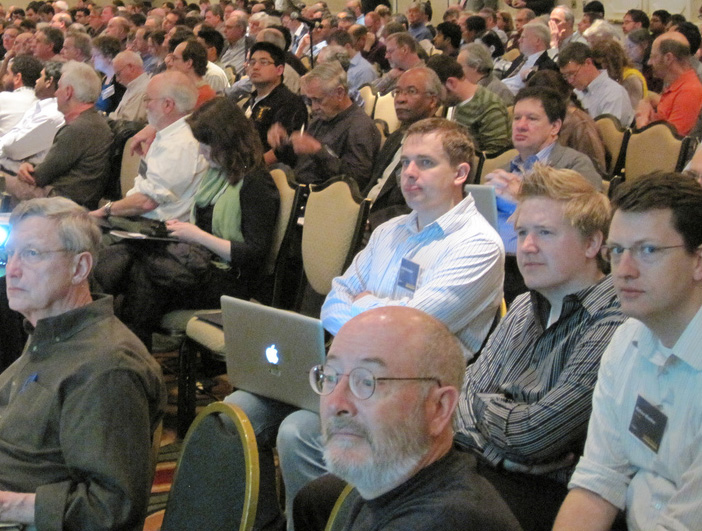As a postdoc, Giovanni Tassielli has the whole particle physics landscape to survey for the most stimulating future job prospects.
The researcher from INFN in Italy feels a pull toward the most challenging experiments at the Intensity Frontier: those that seek out the rarest of all particle interactions, the smallest of effects and provide a glimpse of physics beyond what experiments at particle colliders can reach.
“I love the precision,” said Tassielli while attending a Department of Energy-organized workshop in Washington, D.C., last week to explore scientific opportunities at the Intensity Frontier. This research area uses densely packed particle beams and complex detectors to allow physicists to see particle interactions occurring as rarely as once in a million million times.
Tassielli says it’s a research area that the world should invest in exploring to expand our understanding of nature, just as other scientists explore the depths of the ocean or craters of the moon.
The Fundamental Physics at the Intensity Frontier Workshop was set up to survey existing research and future scientific possibilities in this area, and to gauge the level of interest from the physics community. Organizers had to start turning people away after the 515 participant cap was reached more than a week before the workshop. Participant enthusiasm and energy exceeded expectations, said Glen Crawford, head of the research and technology division of DOE's Office of High Energy Physics.
“There were a lot of lively discussions,” he said. “There were lots of young people asking good questions, people saying, ‘I learned something,’ people stopping you in the hall and saying, ‘This is great. I’m exploring opportunities for what I want to do next.’”
Yuhsain Tsi, a theory postdoc from Cornell University, said he’s interested in neutrino physics because Intensity Frontier science has as much discovery opportunity as other areas of particle physics.
Physicists spent three days in six working groups listening to more than 100 presentations identifying promising research areas that use neutrinos, nucleons, nuclei, heavy quarks, charged leptons and exotic particles such as axions. The consensus was that a host of experiments have the potential to answer the biggest questions: How did the universe begin? What is it made of? How does it work? How did we come to exist? Answers from this research could aid studies in cosmology, nuclear physics and other areas of particle physics.
“What came out was that there is a broad program that has interconnections inside the Intensity Frontier and outside the Intensity Frontier that addresses fundamental symmetries of physics,” said workshop co-convenor Harry Weerts from Argonne National Laboratory.
Experiments probing the Intensity Frontier are currently running in Europe, Asia and the United States, with more proposed for the future. Flip Tanedo, a theory postdoc from Cornell University, said the ability to work face-to-face with experimental colleagues on an experiment in the United States is a key draw of the Intensity Frontier and opens the door to more productive research.
The results of the workshop will be summarized in a report that will be presented to the DOE and the High Energy Physics Advisory Panel before its March meeting. This report will provide a survey of the physics community’s thoughts about the Intensity Frontier and its scientific potential.
“The Intensity Frontier is rich. That is what we have discovered during the last three days,” said JoAnne Hewett, co-convener and SLAC physicist, said in a closing speech at the workshop. “And I think we have demonstrated a strong desire to do this physics.”



